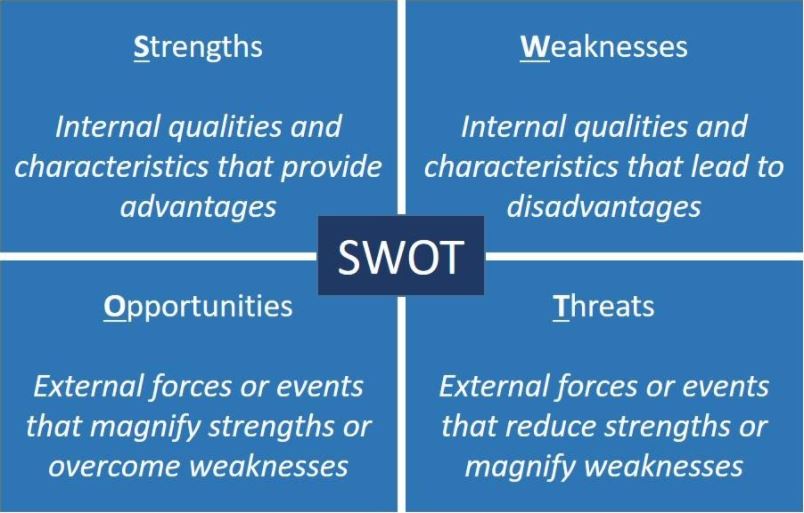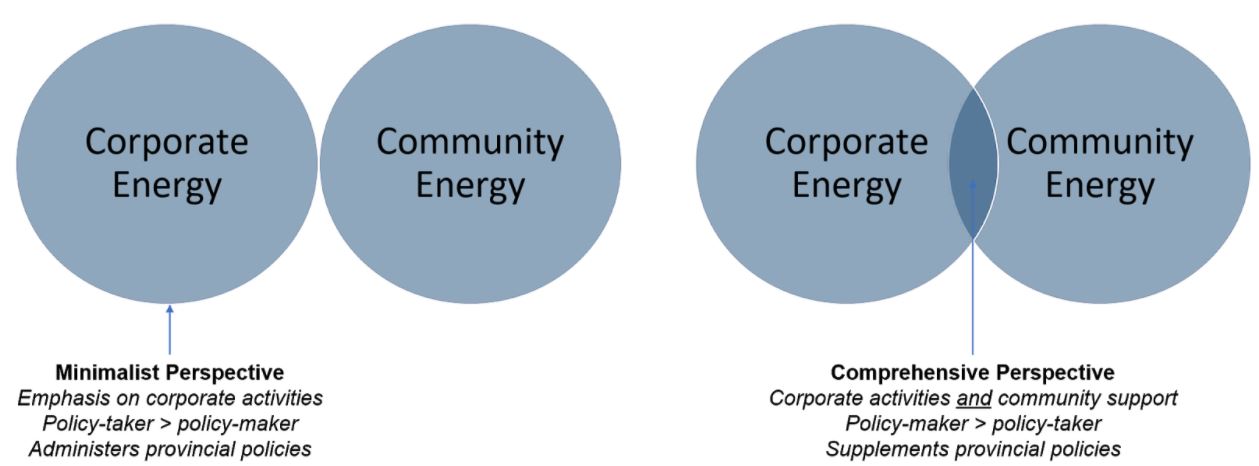Catalyzing cross-sector implementation of renewable energy through intermediaries
Purpose and Objectives
The purpose of this section is to introduce governance innovations that can facilitate collaborative implementation of renewable energy systems (and other aspects of community energy plans). Specifically, we shed light on ‘intermediaries’: i.e., organizations that institutionalize local collaborations, and serve to catalyze and coordinate the implementation of community energy plans. In this section, we will:
Articulate the significance of intermediaries to community energy planning
Identify the different roles, functions, and design considerations
Assess the strengths, weaknesses, opportunities, and threats associated with this governance approach based on a review of literature and insights from key informants involved with local intermediaries operating in select Canadian communities
In the end, we hope to have equipped you with baseline knowledge necessary to assess whether an intermediary might be the right fit for your community.
Background and Significance
The barriers to renewable energy (RE) technology implementation and diffusion are systemic. Even as RE systems have become cost-competitive with conventional energy systems, and as flows of capital investment are poised to drive RE implementation, their deployment is inhibited by entrenched preferences for conventional modes of energy generation and distribution within prevailing regulatory systems, utility business models, and energy markets. These entrenched preferences and interests are not always obvious or deliberate in their intent to inhibit the deployment of RE. Systems are lazy, and they will not change on their own. They require a vigilant effort to identify and address the ways in which they inhibit deployment of RE at scale.
Intermediary organizations are a governance innovation through which this vigilance can be achieved at a local level. Intermediary organizations serve as a network manager, a catalyst, and a boundary crosser. Their purpose is to break down silos and systemic barriers by brokering relationships across implementation partners to drive community projects and programs. Our focus here is on intermediary organizations with a direct line into municipal government, and a direct mandate to catalyze the implementation of a community energy plan (CEP). As a corollary, the municipality is positioned as a partner, rather than the primary implementer, of a CEP. This is not a new proposition for community energy planners. The spirit and intention of CEPs have always envisioned such a role for the municipality. The suggestion to develop an intermediary organization is simply a proposal to structure and institutionalize this role. In many ways, establishing an intermediary is a classic form of corporate innovation: where a corporation (municipality) sets an objective that overwhelms internal capacity and extends beyond the sphere of direct influence (e.g., climate emergency declarations or net-zero carbon targets), that corporation must find ways to mobilize external resources to support those objectives. An intermediary is just such an innovation.
There are two underlying assumptions here, about the role of the municipality in CEP implementation. First, that the mentality of municipal staff shifts from an ‘inside-out’ approach to an ‘outside-in’ approach. Municipalities must work to align themselves with implementation partners first, and then organize internally. When the municipality sees itself as the implementer of CEPs, the opposite tends to be true: municipalities organize internally, and then align themselves externally. This inside-out approach can foreclose or delay collaborative solutions. The second assumption is that the problem statement shifts from ‘technology and finance’ to ‘institutional capacity and collective action’. Seen in this light, the municipality focuses on expanding capacity by mobilizing collective action, rather than starting with concerns about which technology will be pursued and whether it can be justified in their capital budget. This view is important, certainly: we are simply proposing that it is not the starting point.
Intermediaries are in some ways similar to municipal service corporations and public-private partnerships, in that these are all governance innovations required to accelerate implementation of renewable energy. Unlike municipal service corporations and many public-private partnerships, however, intermediaries are (in theory) not meant to deliver services or products. They are meant to sit between organizations that do; to serve as a backbone for collaborations across government, NGOs, businesses, and the public. In Canada, intermediaries have taken two forms:
- An incorporated not-for-profit entity tied to the municipality through a service agreement and a mandate to implement the community energy plan. See Our Energy Guelph as an example of this model.
- An unincorporated network of key implementation partners, committing resources (cash and in-kind) into an entity with a mandate to drive a collaborative investment strategy. See Waterloo Region Community Energy as an example of this model.
Research
To date, very few intermediaries are operating in a community energy context. There is, however, an extensive literature on intermediaries working in other domains (e.g., homelessness; poverty reduction). We review that literature here, supplemented by insights from interviews with key informants who have experience with intermediaries across select Canadian communities. We use a Strengths, Weaknesses, Opportunities, Threats (SWOT) approach, described in the figure below, as a way to draw out insights from experiences. Ultimately, more research is needed on specific design features and outcomes to understand the efficacy of these governance innovations.

Strengths
- Political resilience in community energy planning (CEP). The long-term objectives of a community energy plan are made vulnerable to relatively short-term election cycles if the municipality is the primary implementer and the plan is held within City Hall. An intermediary can protect the CEP against political disruption. Intermediaries can adapt the tone and approach of CEP implementation to shifts in local politics, without abandoning it entirely as can be the case with direct ties to Council decisions.
- Neutral convener. Related to the above, an intermediary is (in theory) guided by a strategic energy plan and is therefore agnostic to technology selection and technology designs. This not only ensures a wide lens through which to evaluate options, but also helps to strengthen political capital among the public and key stakeholders because intermediaries push a mission, rather than a specific technology or program. They facilitate technologies or programs to the extent that they fit the mission.
- Builds energy literacy. Often, failure to adopt new and beneficial technologies among the public and local businesses is related to poor messaging, low awareness, and / or lack of trust. Intermediaries can centralize and expedite information sharing, serving as a local think-tank and source of trusted information.
- Backbone for CEP implementation. The purpose of an intermediary is to broker and catalyze partnerships and collaborations to drive implementation of projects and programs. In other words, they are meant to make the job of existing actors easier; not to replace their job. Intermediaries can translate jargon and standards of work – e.g., across energy professionals and land-use planners and property managers. In addition, the role of an intermediary is to turn shared resources, and capacity-holders into implementation partners. The implementation of innovative technologies and services is inhibited by a myriad of factors that are difficult to detect and resolve by municipal government alone. Collaborative, cross-sector implementation strategies and initiatives are critical to overcoming the systemic barriers described above.
Weaknesses
- Unproven (and sometimes undefined) financial model. Intermediaries are often initiated with funding from municipalities or government grants. In some cases, depending on the level of commitment, that funding can carry the intermediary through its operational life. In other cases, for example Our Energy Guelph, public funding is considered seed funding, and the intermediary develops a business plan to secure long-term funding. Long-term funding can come from a range of sources, including sponsorships, memberships, revenue sharing from programs established under their purview, and / or convenor fees as a percentage of project value. Establishing multiple revenue streams is important, but difficult and not yet proven. Furthermore, there is always a risk that an intermediary will fall into a role of ‘implementer’ rather than ‘catalyst’ to achieve financial security (e.g., fees for services). Resource constraints can magnify these weaknesses (as discussed below under ‘threats’).
- Low legitimacy, initially. In general, there is a history of siloed approaches to energy planning and energy management, and a lack of understanding of collaborative governance models. Intermediaries need to break these siloes down, without a lot of legitimacy initially. Whatever the specific design of the intermediary – whether an incorporated not-for-profit or a less structured network – collaboration and collaborative implementation will move at the speed of trust, which is to say it will move slowly.
Opportunities
- Funnel for resources. Intermediaries can coordinate grant applications and other funding pitches/partnership models. This is one of the ways in which an intermediary can ‘grow the pie’ for other organizations. The same is true of private capital which is rapidly moving out of fossil fuels and into renewable energy. Intermediaries can help to steer capital toward local projects that help meet community objectives.
- A forum for innovation. Intermediary organizations offer a space in which bold, forward-looking and potentially controversial ideas can be shared, outside of the context of formal decision-making processes and its politics. An intermediary organization can engage in conversations and develop partnerships that would be difficult for a municipality. In fact, intermediaries can serve as a permanent ‘innovation sandbox’: bringing key change agents into dialogue to identify systemic barriers and negotiate visions, roles, and responsibilities to accelerate the implementation of renewable energy.
Threats
- Free riders. This can occur if key stakeholders assume that problems are being solved by the intermediary and, in turn, step back or direct their attention elsewhere. One specific example of this threat is if a municipality supports an intermediary and then reverts to a minimalist view of their role in implementing community energy plans, as shown in the figure below:

- (Perception that) the organization is captured by outside interests. Capital is moving rapidly out of fossil fuels and into renewable energy development. Intermediaries can help to direct that capital to projects and programs that meet community interests. On the other hand, these opportunities can also be a threat, to the extent that an intermediary deviates from its mission, or narrows their mission, in response to financial opportunities. Should this happen, an intermediary would then tend to become an implementer rather than a catalyst and would begin to advocate for specific programs and technologies – thereby narrowing their mission and potentially losing a lot of social and political capital that is a source of strength.
- Weakened civil society. Intermediaries rely on a strong civil society and a propensity toward collaboration. A wide range of forces that might work against this, including the rise of various forms of populism and increasing distrust in social institutions, are threats to the capacity of an intermediary.
Key Takeaways
Technological innovations need to be met with social innovations. Establishing an intermediary is increasingly seen as a crucial social innovation through which to accelerate the implementation of renewable energy, and of community energy plans more broadly. In all cases, intermediaries move at the “speed of trust”, which is to say slowly and only through predictable commitment and cultivation of relationships. For more information on this idea, consult the resources below.
Key References
- Bonow, M., Normark, M. 2018. Community gardening in Stockholm: participation, driving forces and the role of the municipality. Renewable Agriculture and Food Systems 33: 503-517.
- Calvert, K., McVey, I. 2017. From strategic planning to implementation planning: a review of emerging standards in community energy planning.
- Dowling, R., McGuirk, P. M. & Bulkeley, H. 2014. Retrofitting cities: Local governance in Sydney, Australia. Cities, 38 18-24.
- Ordonez-Ponce, E., Clarke, A.C., Colbert, B.A. 2020. Collaborative Sustainable Business Models: Understanding Organizations Partnering for Community Sustainability. Business and Society
- Viana, C., Coudel, E., Barlow, J., Ferreira, J., Gardner, T., Parry, L. 2016. How Does Hybrid Governance Emerge? Role of the elite in building a Green Municipality in the Eastern Brazilian Amazon. Environmental Policy and Governance 26: 337-350.
